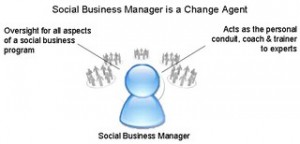Nigel Griffiths eats, drinks and sleeps Power Systems. Around 15 years ago, this IBM performance guru located in the United Kingdom authored a free utility he called nmon (short for Nigel’s Monitor), which can be used to monitor and analyze performance data on AIX and Linux systems.
While never officially supported by IBM, the tool captured the attention of performance specialists throughout the world to the point where today, Griffiths estimates, it has between 20,000 – 30,000 users. As nmon’s popularity grew, Griffiths was faced with a problem: how best to support this burgeoning community. “And so to communicate with them better, rather than e‑mailing them all,” he explains, “I started to get involved in developerWorks …” Thus marked the beginning of Griffiths’ journey into using developerWorks and its extensive social media capabilities.
A growing awareness of users’ needs
Griffiths first step was to create a wiki which he used to provide documentation and downloadable binaries for nmon. From there, he started a forum to answer questions from users directly and get answers to them fast. But he soon discovered that he was also fielding questions about Power Systems performance in general, and he noticed that many users were confused about how the machines work and how to get the best out of them, “Everyone wants their machine to go faster”.
And so Griffiths began blogging on developerWorks to allow others to benefit from his AIX and Linux expertise. He even made a few embedded videos. “I have the luxury that I work in advanced technical support, so I work on new things that are happening, new machines that we are bringing out with the latest technologies,” he says. His rule of thumb in deciding what to blog about: when he comes across content of interest to him, chances are that lots of others will be interested too.
The reader reaction and comments he’s generated from his blog entries have helped Griffiths escape what he calls “expert blindness”. He points to IBM clients just starting out and how they often struggle with things that he thinks are blatantly obvious. “That makes me rethink the way that we’re putting these things over and it reminds me that … there’s always some new guys that need a bit of help,” he says.
Griffiths has also found that customer tech people value interacting with IBM tech people and are impressed when contact is made, which helps increase brand awareness and purchase consideration among IT decision makers.
Griffiths is now using Twitter @mr_nmon to get the word out about his blog postings and to follow other leading performance experts. Currently, he follows 12 other techies inside and outside IBM whose knowledge he respects. “I usually find maybe one or two things a day that I think, oh, that’s useful, that would take me ages to work out. Or, I’ll file that one away, that could be useful in a project in the future,” he says. He also likes to re-tweet those items to the 400 or so people that are on his Twitter list, so they’re aware of the good stuff that others are doing.
Finding your own way
Griffiths’ advice to others considering social media: “Find out what approach to social media works for you.” For him, it’s about spending a few hours each week sharing expertise so people don’t have to find things out the hard way.
While leery about becoming too well known, Griffiths acknowledges that his reputation as a performance guru has grown considerably since he started blogging and tweeting. And his moderated use of social media shows that you don’t have to jump in with both feet to be really effective and make a contribution.
A quick look at developerWorks
Since 1999, IBM developerWorks has been the IT industry’s most comprehensive source of technical content for the developer community, focusing on IBM software products, as well as open-standards technologies such as Java, Linux, XML, Web development, and more. Four million IBM and non-IBM developers, IT professionals, and students in 195 countries use developerWorks each month to learn about advances in IT and open standards, develop and showcase their experience and skills, solve problems, and work collaboratively with experts and peers.
Today, the platform provides an extensive and well-managed set of social capabilities specially designed for business, which include wikis, blogs, forums, bookmarks, groups and profiles. Recently, developerWorks received the Forrester Groundswell Award and the AMI SMB Social Media Award in recognition of its effective use of social media.
“In a social enterprise,” says GinniRometty, CEO of IBM … “your value is established not by how much knowledge you amass, but by how much knowledge you impart on others.”









